|
Timothy Dalton's Bond 17
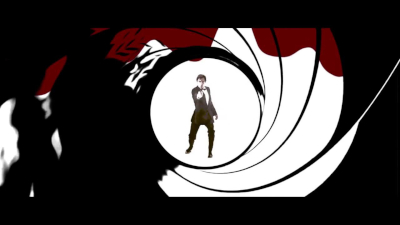
In
1989, Alfonse M. Ruggiero Jr, a writer on the TV show Miami vice, sent
Michael G. Wilson a story treatment of his idea for a Bond film. Wilson
deemed that Ruggiero's treatment was of little use because of its
similarities to Licence To Kill (Ruggiero's ideas are said to have
involved drug runners in Mexico) but he was impressed enough to suggest
that Ruggiero should personally work with him on a story for Bond 17.
By May 1990, this Ruggiero/Wilson treatment had been completed. Behind
the scenes, the veteran writer Richard Maibaum and regular in-house
director John Glen were told that their services would not be required
on Bond 17. Cubby Broccoli, still stung by the disappointing American
grosses on Licence To Kill, was intent on shaking things up in the Bond
family before the cameras started rolling again. It was no great
surprise that John Glen would not be coming back as he and Timothy
Dalton had a mild falling out near the end of production on Licence To
Kill. More pressingly, it also made sense creatively to make a change
in the director's chair at this point. John Glen had been an excellent
servant to the Bond series for many years but it was logical to hire
someone new to direct the first James Bond film of the 1990s. Bond 17
would also be pivotal to Timothy Dalton's era so EON clearly needed a
director who might offer a fresh perspective and style.Cubby
Broccoli would later hire Will Davis and William Osborne (who wrote the
Arnold Schwarzenegger film Twins) to provide further drafts of the
Ruggiero/Wilson story. Willard Huyck & Gloria Katz (who wrote on
films like American Graffiti, Indiana Jones and the Temple of Doom, and
Howard the Duck) were also approached by Broccoli with a view to
further refining the story. A start date of 1991 was planned and the
Canadian director Ted Kotcheff (best known for directing Sly Stallone
in 1982's First Blood) emerged as the prime candidate to sit in the
director's chair for Dalton's third adventure. While
he had a reasonable track record when it came to action (not only First
Blood but also the Gene Hackman film Uncommon Valor), Ted Kotcheff was
hardly the most exciting choice of director in the world. Kotcheff's
most recent films at the time (Switching Channels, Weekend at Bernie's,
Winter People) had all been mediocre and completely forgettable and did
not inspire any confidence he would be too much of an upgrade on John
Glen. In a 2017 interview for the Money into Light blog, Kotcheff said
he was offered Bond 17 but turned it down because the proposed fee was
(in his view) an insult. "It was the only time that I turned down a
movie over money. I thought 'If I'm going to do a Bond movie, I want to
get paid.' Nobody is going to look at a Bond film and say 'Oh, what a
great directorial job.' On a Bond film what you need is a good stunt
co-ordinator. It's too bad. I do like the series, and I love Sean
Connery in particular."A more
interesting reported candidate to direct Bond 17 was John Landis.
Landis was no stranger to EON as he had been one of many writers who
pitched ideas for what became The Spy Who Loved Me. Landis was friendly
with Cubby Broccoli and claimed he turned down an offer to direct
Licence To Kill in 1988. At one point, Landis had been one of the
hottest film directors in the world thanks to Animal House, An American
Werewolf in London, and The Blues Brothers. There was briefly a time
when Landis was pure A-list and a near equal to the likes of Steven
Spielberg. Landis however was forever tarnished by the 1983 anthology
film Twilight Zone: The Movie - in which he directed one of the four
segments. The movie was something of a dream project for Landis and his
friend Steven Spielberg (who was also producing the film and directing
a segment himself). It turned out in the end to be more of a nightmare
project though.The Twilight Zone
film was completely overshadowed by a horrific helicopter accident on
the set which killed the actor Vic Morrow and two child extras (Renee
Chen and My-ca Dinh Le) during the shooting of the John Landis
contribution. Landis and his team had secretly paid the families of the
child extras under the table and then used the children on a dangerous
night shoot (this was all in violation of California's child labor
laws). The tragic accident swiftly ended the friendship between
Spielberg (who was devastated and angry when he found out what had
happened) and Landis and led to a ten year manslaughter case in the
courts. To the surprise of most observers, Landis somehow managed to
evade any serious charges for the accident despite the fact that he had
needlessly put his lead actor and two child extras at risk simply
because of his determination to capture a great shot for his film.Landis
had arranged for Vic Morrow (who was no spring chicken) to wade through
a wind machine lashed river carrying the children as huge explosions
went off in the background (the sequence was depicting a Vietnamese
village being destroyed by an American airstrike during the Vietnam
War) and a helicopter (which Landis allegedly ordered to get lower)
hovered above them. Tragically, debris from one of the explosions hit
the helicopter's tail rotor and after losing control it flipped over
and landed on top of Morrow and the children. Two books were written
about the Twilight Zone accident and they both painted John Landis as a
bombastic, reckless, and dangerous egomaniac.The
career of John Landis never quite recovered from the awful Twilight
Zone tragedy. Despite the success he had directing Michael Jackson's
famous Thriller horror music video, Landis found his status in
Hollywood reduced thanks to the Twilight Zone affair and the poor
reception of films like Into the Night and Spies Like Us. He never
really managed to get back to the Hollywood top table again although he
did have a solid box-office hit with the 1988 Eddie Murphy comedy
Coming to America. John Landis
would have been the first American to direct a Bond film. He could do
action (look at all those car chases in The Blues Brothers), he could
do comedy (even An American Werewolf in London is funny and deadpan),
and was an energetic and inventive sort of director. The thought of
John Landis (even a Landis past his prime) making a Bond film was a lot
more interesting than the prospect of Ted Kotcheff. What would
inevitably have complicated any chance of Landis doing a James Bond
film was the question of creative control. Landis was the sort of
director who wanted the final cut - or at least be the person calling
all the shots. You couldn't imagine EON happily taking a back seat to a
big personality like John Landis. Despite this obvious stumbling block,
Michael G. Wilson was said to be genuinely interested in hiring him. The
most offbeat candidate being linked to Bond 17 when it came to the
director's chair was later John Byrum. John Byrum was not exactly a
household name. He had directed the little seen British film Inserts in
the 1970s and later directed Bill Murray in a 1984 adaptation of W.
Somerset Maugham's 1944 novel The Razor's Edge. The Razor's Edge didn't
make any money and earned mixed reviews. Byrum seemed to be mostly
working in television by the time his name started to be linked to the
Bond franchise. Another candidate was Roger Spottiswoode - who said
that he was approached about directing Bond 17 in 1991. Several years
later, Spottiswoode would direct Pierce Brosnan's second Bond film
Tomorrow Never Dies. The
rumoured title of Bond 17 in the media at the time was Portrait of a
Lady. That's not a typo. It really was rumoured early on. Naturally
that old unused Fleming title The Property of a Lady was then rumoured
too - though with no discernible truth. Quantum of Solace (another
unused Fleming title) was also thrown into the speculation as a
potential title. A title more seriously under active consideration for
Timothy Dalton's third Bond film though was Goldeneye. Things were
definitely happening behind the scenes. The Cannes Film Festival in
1990 featured a banner suggesting Bond would return to screens in 1991.It
is certainly interesting that, despite the mixed reception to Licence
To Kill and disappointing North American gross, Cubby Broccoli was
intent on a business as usual approach and had no desire for a hiatus
or much time to stew on the direction the franchise might now take. He
was also clearly still 100% behind Timothy Dalton despite the
persistent entertainment news gossip that MGM wanted to replace Dalton
with Pierce Brosnan. While all the plans for Bond 17 slowly stirred and
simmered a storm cloud entered the horizon. MGM/UA was sold to Pathé
Communications. Danjaq, the Swiss based parent company of EON, sued
MGM/UA and its new chairman to protect the TV distribution rights of
the James Bond series from being devalued. These legal wrangles would,
unknown to anyone at the time, drag on for much longer than expected
and have profound consequences for Bond 17.The
Bond 17 script treatment by Alfonse M. Ruggiero Jr and Michael G Wilson
concerned the handover of Hong Kong from Britain to China (which was
set to happen in 1997). An accident at a British chemical weapons plant
leads to Bond investigating Sir Henry Lee Ching - a British-Chinese
entrepreneur. The story takes place in Hong Kong, Japan, and China, and
has Bond teaming up with a female master thief and part-time CIA agent
named Connie Webb. Now that the Cold War was apparently no more, the
Bond team obviously looked to China (as the remaining communist
superpower at the time after the fall of the Soviet Union) for
inspiration when it came to intrigue and villains. The
synopsis for the script treatment went like this - 'A mysterious
explosion devastates a Scottish chemical weapons factory. The
perpetrator of this misdeed already announces other attacks and 007 is
sent to the Far East to investigate a thief, Connie Webb, who may well
have a connection with all this. Very quickly, Bond realises that Sir
Henry Lee Ching, a Hong Kong businessman working in high technology, is
not the man as respectable as one might think. 007 will have to team up
with the Chinese secret services in order to discover the plans of the
mysterious Henry Lee Ching, and prevent a global disorder that could
lead to the Third World War...'Ruggiero's
ideas were based on the lucrative real world arms trade. The wealthy
Western nations sell a lot of weapons and military technology around
the world - sometimes to governments or regimes you wouldn't exactly
describe as ethical. Ruggiero came up with the idea of having the
villain be a manufacturer of military technology who is secretly using
his own technology to gain control of weapons systems and missiles. In
the world of James Bond this is hardly an original idea. Ian Fleming's
1955 novel Moonraker had already done a similar plot. Fleming's story
is about an enigmatic tycoon called Sir Hugo Drax. Drax is developing a
nuclear missile system for Britain known as the Moonraker project. It
is only Drax though who has total control of the missile. The
most interesting thing about the Alfonse M. Ruggiero Jr and Michael G
Wilson script treatment is that the villain is an expert in robotics
and computers and threatens to paralyse all military computer systems
around the world. "Fools believe that their weapons make them
invincible," he boasts. "In their paranoid whims, they waste billions
on weapons systems built by my companies, but in reality they have
become imprisoned from their own armor. All military and commercial
units in the world can be instantly paralyzed from this room!" The
microchip entrepreneur Ching was set to be a much more 'old school' and
fantastical villain than we'd seen so far in the Timothy Dalton era. Henry
Lee Ching, we learn in the treatment, has become very powerful and is
buying companies left, right, and centre all around the world. He's the
Jeff Bezos of his day. It turns out that Ching's father fled China to
Burma years ago where he became a brutal warlord and drugs baron. Quen
Low, one of the Chinese agents that James Bond works with in the story,
says that Ching's father and his men were wiped out by Chinese and
Burmese authorities but that his son and wife managed to flee to Hong
Kong. Henry Lee Ching has
understandably always tried to hide the shameful past of his family.
Ching built a financial empire thanks to his genius with electronics
but he is bent on revenge against China for what they did to his
father. Ching has supplied military equipment and technology to Britain
- which would explain how he got a knighthood. Gustav Graves in Die
Another Day seems to owe something to Ching but it could be that Graves
- like Ching - simply owes something to Hugo Drax!The
PTS of Bond 17 in the Ruggiero/Wilson treatment was potentially set to
be a spectacular sequence where a Scottish chemical weapons facility is
destroyed when one of the robotic machines there begins to malfunction
and go berserk. It is equally possible that this sequence might have
been used after the titles though. Although all the scenes of robotics
in the film sound far-fetched, EON were deadly serious and even hired
Disney’s Imagineering department to come up with some designs. There
was patently a clear desire to inject more fantasy (and even a little
sci-fi) into the Dalton era. Contrary to what you might have read about
this script treatment, EON were not planning to make James Bond vs The
Terminator. The robots were inspired by real industrial machines. In
the treatment by Alfonse M. Ruggiero Jr and Michael G Wilson, Sir Henry
Lee Ching arranges various accidents at military facilities around the
world - which naturally keeps James Bond busy. Ching is described as a
young and handsome villain who is indifferent to the human race and
only cares about science. The climax was set to feature a fight between
Bond and Ching in which Bond gets the upper hand by using a blowtorch.
Bond was also set to work with a veteran spy named Denholm Crisp in the
story. Other characters included a Chinese intelligence operative named
Mi Wai and an assassin named Rodin who has numerous high technology
gadgets - including a Predator style thermal imaging vision system
inside his motorcycle helmet. Bond
fans will notice that a number of ideas and themes in the
Ruggiero/Wilson script (like the Far East setting, tension over Hong
Kong, a plot to engineer a conflict between China and the West, and the
female Chinese agent character) were later recycled and used in
Tomorrow Never Dies. Highlights of the Bond 17 script treatment include
an explosion in the Nanking Atomic Plant, a skiing/avalanche sequence
(Connie Webb is revealed to be a former skier who would have gone to
the Olympics were it not for an injury and we know that Bond is an
expert skier too) which ended up in The World Is Not Enough, and a car
chase between the Aston Martin and Rodin's high-tech computer car (this
sequence ends with Bond using an ejector seat and parachute to escape).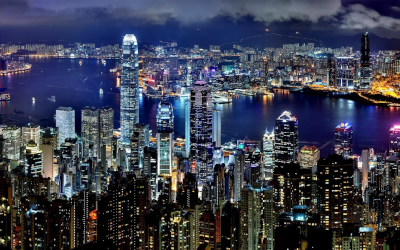
During
the sequence where Rodin duels with Bond in his high-tech car, Ching
watches the action with the captured Connie on a giant viewscreen as if
it is a computer game. The big chase which pits Bond's DB5 against
Rodin's high-tech supercar predates the high-tech car showdown in Die
Another Day. This sequence is fun because Bond's Aston Martin has
plenty of gadgets and tricks of its own to pit against the lethal
technological vehicle of Rodin. There is also a sequence where Bond is
tied up and tasered, superconductivity intrigue, a Lamborghini chase, a
battle with twin Japanese villains named the Kohoni brothers (the
Kohoni twin brothers are leaders of the Kohoni industrial empire), and
a climax in the sewers of Hong Kong. 007 also has to foil a missile
strike on Shanghai and flood Sir Henry Ching’s space-age command HQ. An
important character in the treatment is Nigel Yupland - a Ministry of
Defence hotshot who wants to dismantle the Double-O-Section now that
Cold War has thawed. This character has some obvious similarities with
Denbigh in the Sam Mendes film Spectre. Yupland has the ear of the
Prime Minster and there is a scene in the treatment which takes place
in the House of Commons. While 007 is able to deduce that Ching is a
villain he finds it difficult to persuade Yupland. Yupland travels to
Hong Kong to try and take over the investigation that Bond is supposed
to be conducting. The DB5 also
returns in the Ruggiero/Wilson treatment. In the script there is only
one classic DB5 left in Q branch and Q arranges to have it sent to Bond
in the field before the bureaucrats can close down the Double-O
section. This treatment provides an expanded role for Q in the same
fashion as Licence To Kill did. Q makes a personal visit to Hong Kong
to deliver the DB5 to Bond (and of course implores Bond to take good
care of the car). There's a great scene where Bond drives the DB5
through Hong Kong's colourful new Year celebrations. The treatment also
features alpine scenes involving a helicopter which obviously evoke
memories of On Her Majesty's Secret Service. Some of the scenes where
Bond and Connie ski are also very OHMSS. There
isn't too much detail about the robotic devices in the treatment. This
aspect was obviously going to be designed and worked out later. A
superconductivity cube in the story is a sort of McGuffin to drive the
plot along (in that the characters are all greatly interested in this
object). This treatment is much more technology and gadget driven than
the two Timothy Dalton films we did get. The villain has a HQ that is
described as like a top secret NATO briefing room. This all feels much
more like the sort of villain we would get in the Roger Moore films
than the villains of Daylights or Licence To Kill. There are a lot of
things blowing up in the treatment so explosions and action is not in
short supply. One thing that
does feel dated in the treatment is the corporate intrigue and danger
having a heavy Japanese element. It was very in vogue in early nineties
Hollywood movies to present Japan as a sinister and alien economic
threat. The obvious flaws in the script are a heavy sense of déjà vu. A
microchip businessman as the villain is too similar to Max Zorin in A
View To A Kill and Connie Webb's CIA agent character feels an awful lot
like a rehash of Pam Bouvier from Licence To Kill. Yupland eventually
orders that Bond should be be taken off the case and sent back to
Britain but 007 ignores his orders and goes AWOL. This is a lazy moment
in the treatment because it is simply repeating the same scenario (Bond
goes rogue) we saw in Licence To Kill. The
Alfonse M. Ruggiero Jr and Michael G Wilson treatment has a theme where
Bond's relevance is starting to be questioned now that the Cold War is
over. Yupland thinks that Bond is an anachronistic cowboy. This theme
(of becoming a relic of another time) would be vaguely present in
1995's Goldeneye (which, unknown to anyone at the time, turned out to
be the next Bond film that did go into production). Goldeneye, because
of both changing times and Barbara Broccoli's increased influence,
would even briefly question whether Bond was a sexist dinosaur. You
don't get that in this Bond 17 treatment but the germ of this concept
is apparent. You could almost
read this theme of 007's place in the world as a meta commentary by the
Bond team on their own franchise. The Soviet Union has collapsed and
the 1990s are upon them. They were obviously mulling over the new
landscape and trying to work out how much Bond has to change to reflect
the times. One other interesting feature of this Bond 17 draft is that
Bond is presumed dead at one point and tries to use this to his
advantage. Skyfall had a similar concept many years later.As
for whether or not the Ruggiero/Wilson script would have made a good
James Bond film, this is a question that seems to sharply divide Bond
fans. It had the potential to be very entertaining and fun in the right
hands but some fans seem to feel it might be for the best that it never
happened and that it (if executed poorly) could have been Timothy
Dalton's Die Another Day. The treatment seemed to represent a tonal
shift from the two Dalton films to more of an escapist and fantastical
sort of Bond film. The
Ruggiero/Wilson treatment seems to be a reaction to criticisms that
Licence To Kill was too dark and 'real world' in its plot and villain.
The Ruggiero/Wilson treatment is designed to explore the possibility of
making Dalton's third film a techno thriller. The blueprint is patently
to make 007 more cutting edge and modern for the 1990s. At the time,
people really were starting to wonder if the Bond series needed a
change of direction or even a rest. Writing in Starburst after Licence
To Kill came out, John Brosnan said that Licence To Kill felt
old-fashioned and behind the times in an action landscape of Die Hard
and Lethal Weapon. The
Ruggiero/Wilson Bond 17 treatment seemed to acknowledge this and even
included some Die Hard inspired sequences like an attack on a high-tech
office and runaway elevator antics. Perhaps the key question is not
whether the treatment would have made a passable Bond film but whether
it would have made a good Timothy Dalton Bond film. It would have been
wonderful to have a solid third Dalton film which established him in
the role (and did good numbers at the box-office) but it would have
been less than wonderful to see his tenure tarnished by a third film
that was too silly and didn't really suit his portrayal of the
character.We simply don't know
how this film would have turned out if it had gone ahead. The treatment
would have been extensively refined and changed before it hit the
screen. If this treatment had been expanded into a competent screenplay
and been given to the right director it probably could have worked.
Besides, who wouldn't have wanted to see Timothy Dalton's James Bond in
Hong Kong battling the technology obsessed henchman Rodin?
* The above article is an excerpt from the book Timothy Dalton's James Bond - The Retrospective.Buy Timothy Dalton's James Bond - The Retrospective
© 2021
Alternative 007
|
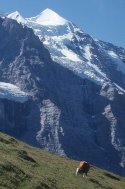
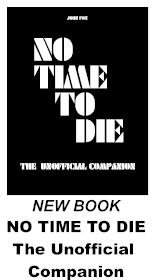
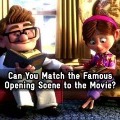
|





